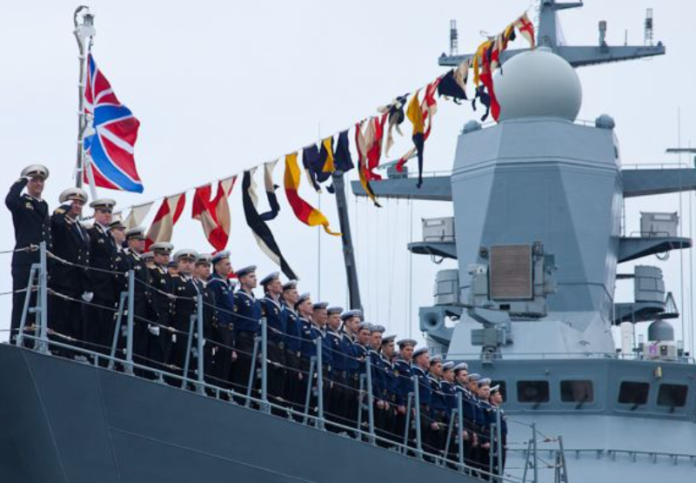As the city founded by Prussians, the city became a Russian enclave in the Baltic, why did the Russians Kaliningrad and whether a war between Russia and NATO may begin with it-in the material of RBC-Ukraine journalist Dmitry Levitsky.
Recently, statements about the threat of war between NATO and Russia have increased in European countries. In particular, Denmark's Defense Minister, Troyels Lund Polesen, did not rule out that Moscow would decide to "test for the strength of NATO's fifth article" three to five years.
"NATO did not have such an assumption in 2023. These are new data that became known now," Danish minister said.
Other NATO member states are seriously attributed to the threat of Russian aggression In early January, Lithuania returned the mandatory conscription for military service for citizens 18-27. Even those who live abroad. And Romania allowed NATO forces in its territory in the event of a serious threat.
"I guess every scenario and I am most serious about the worst. This is the role of the Minister of Defense in the situation in which we are in today. These are not words thrown into the wind," said Polish Vladislav Kosinyak-Komysh in February.
Recently, one of the publications of The Telegraph has published a possible scenario of Russia's attack on NATO. Russian aggression, according to The Telegraph, can begin with the Baltic countries in 2024.
_1.jpg)
In the summer of 2024, according to the publication, Russian cyberattacks can begin in the Baltic countries, as well as Moscow can ignite the riots of Russian national minorities in these countries. In the fall, Russians can cross half a million soldiers to Kaliningrad and Belarus, and in the winter to begin provocations in the Suvoalsky corridor (a small border between Poland and Lithuania, which separates the Kaliningrad region from Belarus), thus provoked by a military conflict with NATO .
Russian base in the rear of NATO
How did it happen that the whole Russian region was separated from the rest of the Russian Federation, moreover, in the middle of NATO countries? The history of Kaliningrad and the Kaliningrad region is drawn from the Middle Ages. The modern Kaliningrad region was inhabited by tribes of the Prussians, which founded Twangst settlements somewhere at the turn of the X-XI centuries.
In the XIII century, the Teutonic Order received from Pope Gregory IX permission to seize the territories of Prussians and their baptism. The Teutons made several hikes and eventually conquered the tribes there, laying on the place of the destroyed Twangst Königsberg Castle.
The Teutonic Order prevailed in the region for almost 200 years, but in the 15th century recognized itself as a vassal of the Polish king. The Poles called Königsberg Krulevts and turned it into the center of Polish printing. One of the first universities in Poland appeared there. However, formally Krulvets belonged to the German vassals of Poland.
In the sixteenth century, the Grand Master of the Teutonic Order of Albrecht transformed the theocratic state of the Teutonians into a secular Prussian Duchy, subordinate to Poland. The capital of the state became Königsberg. Later, the Duchy became a kingdom of Prussia after unification with Brandenburg.
The first Russian attempt to capture Königsberg occurred during the Seven Years' War in the XVIII century. At that time, the troops of the Russian Empire entered the city, but only four years later Peter III returned to Prussia all the captured lands within the framework of the St. Petersburg Peace Treaty. During the Napoleonic wars, the Russian army suffered a devastating defeat in battle with French near Friedland (modern Pravdinsk in Kalinigrad region) in 1807. Having lost half of his army, the Russian Empire was forced to admit defeat in the war.
At the beginning of the First World War, the Russians again repeated the attempt to capture Königsberg, who was already part of the German Empire at that time, but were destroyed. After the First World Prussia, she was cut off from Germany by a piece of Polish territory, which in 1939 was one of the reasons for Adolf Hitler's attack on Poland.

The Russians turned the Kaliningrad region into a base for their fleet (photo: encyclopedia.mil.ru)
As a result of the Second World War, Königsberg, together with the northern part of Eastern Prussia, went to the Soviet Union. After the war, the Russians carried out the so -called "Sovietization", which resulted in Königsberg Kaliningrad, and the region was called the Kaliningrad region. However, the Russians renamed all settlements. And after the collapse of the USSR and the formation of independent Baltic republics, the region was cut off from the main part of the territory of Russia.
The Russians actually turned the Kaliningrad region and Kaliningrad itself into a military base. Thus, in the city of Balticsk (former Pillau) is the largest maritime base of the Baltic Fleet of the Russian Federation. During the reign of Putin in the Kaliningrad region began to be based capable of launching nuclear missiles complexes "Iskander" and carriers of "daggers" fighters Mig-31K, which are concerned in NATO countries.
"The location of certain weapons, the deployment of certain military units in the Russian territory is an exclusively sovereign issue of Russian territory," the Kremlin spokesman Dmitry Peskov said in 2018.
But already in May 2022, Russian troops conducted training in Kaliningrad in the background of a full -scale invasion of Ukraine, during which they mimic ballistic missiles. The "targets" were aerodromes, the accumulation of military equipment, command points of the conditional enemy and other strategic objects. The German analysts then regarded these exercises as intimidation of NATO.
Is Russia an attack on NATO
It is unknown why the above -mentioned scenario of the conflict between NATO and the Russian Federation is based. It may be no more than the assumption of the authors of The Telegraph, but the threat of conflict in the Suvoral Corridor is not the first time. Back in the summer of 2022, Politico called Suvoalsky Corridor "the most dangerous place on the planet", since it was there that NATO war with the Russian Federation could begin.
But whether it is enough in Russia, which has tied in a full -scale war with Ukraine, resources for another conflict. Especially with NATO. According to the head of the Center for Military Legal Research Alexander Musienko, the answer to this question is what type of war to consider. Speaking of full -scale aggression, as an example of war with Ukraine, no. But conflict over the Crimean Scenario is quite possible.
"If we take a war with the use of aviation, long-range missiles, cyberattacks, provocation of riots within NATO countries, with" green men "that can land in conditional Latvia, Lithuania or Estonia, then it is possible. The whole Russian military car is preparing to comment on the war."

According to the analyst, there are several scenarios of conflict between NATO and the Russian Federation. The first is the previously mentioned Crimean Scenario.
"For example, a month or two in Latvia, where there is a Russian -speaking community, there are some riots, during which helicopters from Belarus fly, from which" green men "are planted and begin to support the riots. At this time, NATO will try to decide whether Russia has been attacked or terror."
Another scenario, according to Musienko, is the attempt of Russian planting on the Gotland (the largest Swedish island in the Baltic Sea), using the Baltic as a base for this. Or, Russian ships can block Denmark to the Baltic Sea to check how NATO will act - will fire Russian ships or try to force them to return to Baltic.
Russian aggression on Poland is also quite possible, the expert says. Such aggression is always considered from two directions - Belarus and Kaliningrad. "Well, accordingly, this Silensky Corridor. This is the most threatening direction," he explained.
All these possible scenarios have a common purpose - to provoke a split in NATO, says the expert. If the Russians provoke a conflict, then one that will cause discussions and uncertainty within the Alliance regarding the response to Russia's actions.
"Russia is interested in disagreements in NATO. It is not interested in the occupation of NATO territory, it needs split and shaking of unity in order to cause a serious crisis in NATO. Putin now needs to demonstrate the inability to solve such situations," the analyst said in a conversation with RBC.
And statements such as the statements of the ex-President of US Donald Trump that the states will not help European allies on NATO in the event of Russian aggression, only once again support Putin's opinion on the differences in the Alliance and add confidence in the correctness of such a strategy.


